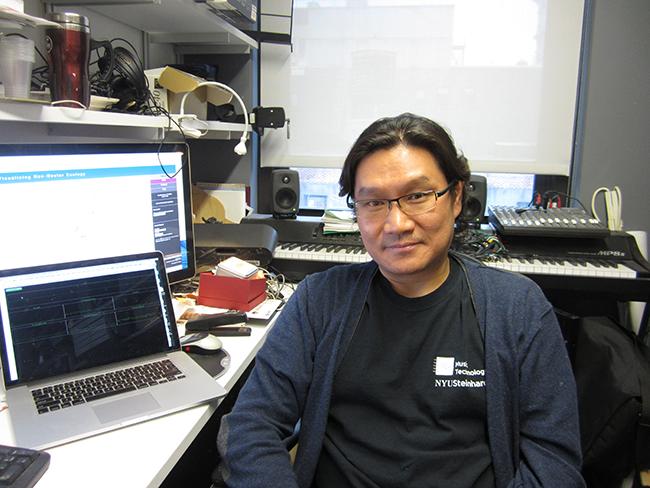Don’t Ask for a Quiet City
February 29, 2016
Professor Tae Hong Park is currently working on an application that maps the sounds of various cities.
For the first few weeks of living in New York, I couldn’t sleep. My dorm by Union Square was across from a hospital and adjacent to major subway lines. My ears, attuned to years of the suburb’s silent nights, could not help but pick up every single pedestrian goings-on. But by the end of freshman year, I was used to the din of East 14th Street — I even craved it.
Professor Tae Hong Park, Director of the Composition Program and Joint Faculty for the music technology program at the Steinhardt School of Culture, Education and Human Development, is currently working on Citygram, an application that maps the soundscapes of various cities. Citygram aims to mitigate noise pollution by creating a cartographic history of noise. Park explained why the ability to quickly adjust to environmental extremes was not necessarily a good thing.
“It’s just human nature to adapt to the environment,” Park said. “Adaptation does not mean it’s getting better. It’s actually getting worse. We just adapt to it.”
Noise is New York’s invisible, yet ubiquitous culprit. Between the 8.4 million people living in the city, the 56.4 million tourists visiting annually and the population density of 53,095 people per square mile of the city’s 304 square miles, silence has become, like most things in New York, a commodity with a price tag.
“If you go to the more secluded areas of the city, or get out of the city — to New Jersey, Long Island — it isn’t really a solution because you’re adding to the traffic problem,” Park said. “It’s impractical; it’s expensive.”
New Yorkers deal with noise pollution not by piping down, but building a toxic resilience. Double-paned windows, insulated walls — these additions only apply to private places. The choice of solution here is closing the door on the problem. The most extreme and expensive way out is an anechoic chamber.
The quietest place in the city is a 520 cubic foot chamber in Cooper Union’s Vibration and Acoustics Laboratory. A matrix of fiberglass grids line the walls, wicking away noise and flattening soundwaves into straight lines. Every spoken word, inhale and fingersnap is suctioned into a black hole of silence.
Cooper Union students often use the anechoic chamber for research, but the chamber also attracts meditation groups. Once outside the anechoic chamber, any sound is loud in comparison, but in Cooper Square, the rumble of relentless construction is an almost painful contrast. Cooper Union professor Melody Baglione warned against the dangers of sound exposure.
“You accumulate all that exposure to loud sounds, and the more exposure you have, you gradually lose your hearing,” Baglione said. “That’s why taking the subway or working on the subway over time can cause permanent hearing loss. A high exposure level, such as a gunshot or excessively loud music, can cause instantaneous hearing damage.”
City-dwellers may develop hearing loss and sleep problems from noise pollution, which may lead to more serious health problems like deafness, heart disease and depression. However, the other extreme is also undesirable. Without the city’s sirens, construction and traffic, New York could not function. Too much quiet, like in the anechoic chamber, could be noxious. Absolute silence carries just as much danger as noise.
“It’s actually not healthy to be in anechoic chambers,” Park said. “You don’t hear anything, which means either you’ve lost your hearing, or you’re dead. Likewise, you don’t want to have a city that’s totally quiet — it means it’s a dead city.”
Before I visited Cooper Union’s anechoic chamber, Park showed me NYU’s semi-anechoic chamber in the Steinhardt Education Building. Inside, Steinhardt graduate students Jordan Juras and Chris Miller were doing research.
“We’re in here a lot,” Miller said. “We’re getting weirder. You can see yourself decoupling from reality.”
Without that sleepless first year by Union Square, I would not have been able to look out the window every time there was a parade or protest. However deafening the city may be, a silent city is more a sign of something wrong rather
than right.
“You reach nirvana when you reach silence,” Park said. “But if you reach nirvana, you’re dead.”
A version of this article appeared in the Monday Feb. 29, print edition. Email Audrey Deng at [email protected].

